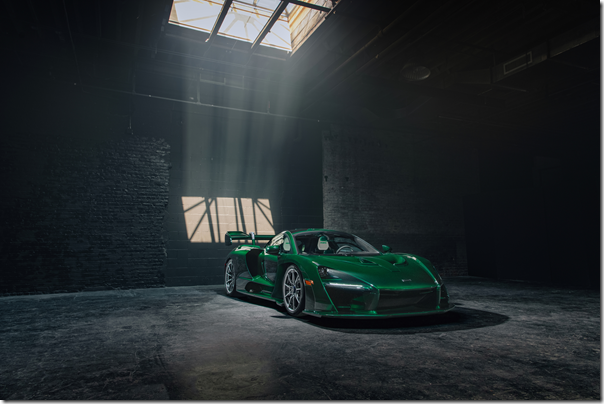McLaren Senna: Remarkable Numbers
This is the first McLaren Senna delivered in North America, a car that was delivered to Michael Fux, who is described as an “entrepreneur, philanthropist and renowned car collector known for his eclectic taste”: The car’s emerald green body color is actually called “Fux Green” by McLaren Special Operations, which provided bespoke options on the vehicle for Mr.
This is the first McLaren Senna delivered in North America, a car that was delivered to Michael Fux, who is described as an “entrepreneur, philanthropist and renowned car collector known for his eclectic taste”:

The car’s emerald green body color is actually called “Fux Green” by McLaren Special Operations, which provided bespoke options on the vehicle for Mr. Fux. (He also owns—among others—a McLaren 720S that has an exterior color that’s designated “Fux Fuchsia.”)
There will be 500 McLaren Sennas built, period.
According to McLaren, the McLaren Senna—yes, named after the famed F1 driver—is “the most responsive and engaging road-legal McLaren ever,” which is certainly saying something.
It has a dry weight of 2,636 pounds and features a 4.0-liter, twin-turbocharged V8 that produces 789 hp and 590 lb-ft of torque. Consequently, it can go from 0 to 60 in 2.7 seconds.
The reason why the McLaren Senna is so comparatively light is that it, like all other McLaren cars, has a carbon fiber structure.
Here’s something that is more remarkable—at least for those who are knowledgeable about automotive production—that the weight or speed of the car:
The body consists of 67 carbon fiber parts. And it takes nearly 1,000 hours to produce them.
No wonder they’re only going to build 500.
RELATED CONTENT
-
On Automotive: An All Electric Edition
A look at electric vehicle-related developments, from new products to recycling old batteries.
-
Plastics: The Tortoise and the Hare
Plastic may not be in the news as much as some automotive materials these days, but its gram-by-gram assimilation could accelerate dramatically.
-
GM Develops a New Electrical Platform
GM engineers create a better electrical architecture that can handle the ever-increasing needs of vehicle systems


.jpg;width=70;height=70;mode=crop)






